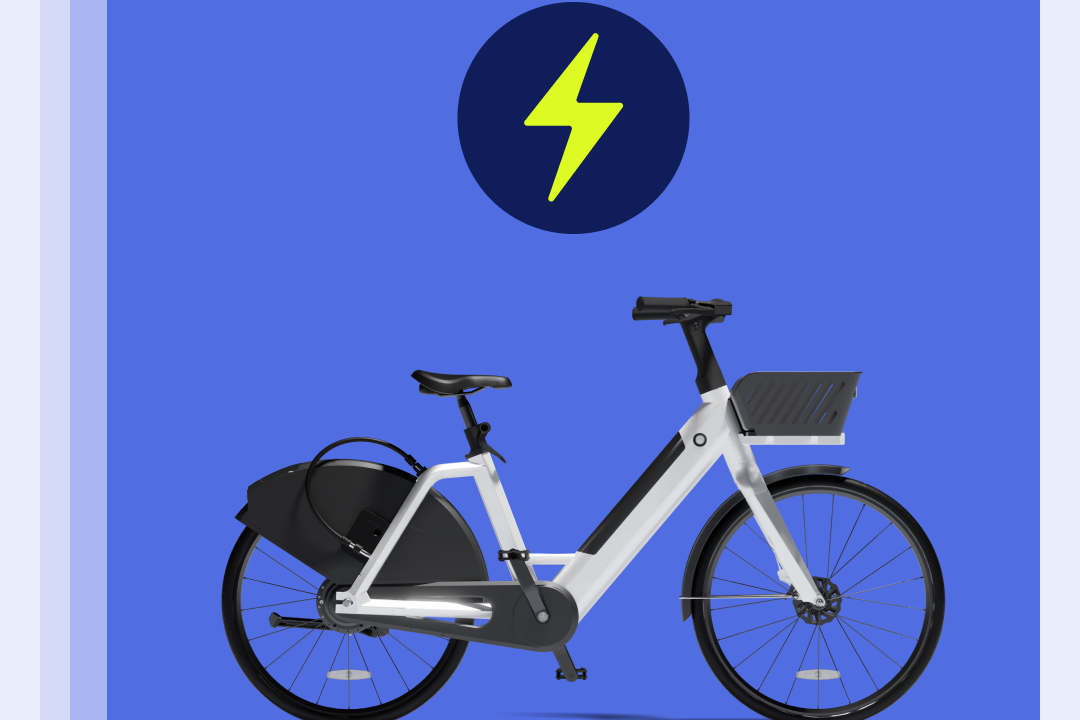It’s no secret, two years into the Covid-19 pandemic, that micro mobility has been transforming our cities one e-vehicle at a time. There is still a long way to go to achieve significant lower emissions and widespread car-free zones, but one of the most sustainable solutions is rising in an unprecedented way – e-bikes.
According to a survey conducted by Inkwood Research, in the next 6 years the global e-bike market is projected to grow by 10%, and will reach around 48.5 billion U.S dollars by 2028. E-bikes also allow many more people to benefit from the act of cycling, both in terms of fitness and leisure.
Built both for city riding and hobby cycling, e-bikes have shown to be one of the preferred solutions in terms of electromobility: they are relatively easy to drive, allow for covering significant distances with way less effort (thanks, lithium-ion batteries) and riders can complete journeys up to 1.5 times faster than on a mechanical bike. As part of the sustainable revolution taking place in cities all over the world, shared e-bikes are disrupting the use of private vehicles for short-distance journeys by providing an attractive on-demand alternative way to travel.

Thanks to their combination of battery and leg power, they expand the practice of cycling across social groups and spaces. As cities are populated by a variety of different people with different needs, it goes without saying that e-bikes are a great investment for multimodal sharing companies.
However, it is important to be aware of the factors that can push or prevent citizens from opting to use e-bikes for their daily commutes. As Wunder Mobility is ready to launch its brand new co-developed e-bike onto the market, let’s have a look at 5 factors influencing e-bike ridership. If you have or are thinking about building an e-bike fleet, understanding the riders’ perspective will enable you to strengthen your marketing strategies and build a solid and successful e-bike sharing scheme.
Post-pandemic reality
Over the last two years, due to Covid-19 pandemic, public transport shifted from being a default option in big cities to a possible threat to one’s health. At the beginning of 2021, 67% of Europeans were less likely to use this form of transport because they were worried about their health. For this reason, many cities invested in new infrastructure and electric micro mobility schemes, with which people could move freely on their own while respecting the environment. Although summer has come and concerns about public transport safety has decreased, the trend of e-bikes as a valid alternative proved its point and it’s here to stay.
What’s the weather like?
Whether you operate in London, Hamburg or LA, inclement weather can influence your e-bike riders to different extents. According to a year-long study conducted on e-bike ridership in Canada, occasional riders were more reluctant to leave their car home on hard winter days; however, avid cyclists were more likely to ride in all weather conditions, arguing that e-bikes enable them to cope more easily with bad weather.
Since e-bikes are more stable and faster than mechanical bikes, it is not uncommon to see riders commuting through rainy and windy days, especially in cities where the weather changes rapidly. Understanding the impacts of weather in terms of seasonal and regional variability is essential as users react differently to temperature variations in different seasons and regions.
The “near me” factor
Accessibility is another factor to consider when thinking about e-bike ridership. In order to choose e-bikes as a better alternative to cars for short- and medium-distance trips, citizens need to be able to access them in an uncomplicated way.
Whether you are thinking about a dock-based, free-floating or hybrid sharing system, it is important to think about how your area of operations will affect the ridership. According to multiple studies on the purpose of e-bike journeys, people find it easier to complete a succession of trips (i.e. home - work - market - daycare) on an e-bike and they use them for a wide variety of errands. Does your area of operations include schools, office buildings, municipality facilities and recreational sites? If not, it’s time to change that. You can add points of interest using our software, so why not talk to your account manager.
Better to share the ride
Although e-bikes are now fully integrated into the urban mobility landscape, they still evoke some doubts regarding maintenance, storage, battery life and, most of all, price.
In fact, due to the different materials and technologies present in each e-bike, they are quite expensive, ranging from 1,000 to 2,000 euros. This means that not only is it expensive to buy an e-bike upfront, it’s also difficult for e-bike owners to leave their e-bikes anywhere while running errands, due to the risk of their bike getting stolen.
This is where the sharing perspective really comes into play: using shared e-bikes gives riders all the benefits and erases the limitations of owning an e-bike, by providing citizens with the opportunity to try it out without a significant upfront investment. The cost-effectiveness and on-demand nature offered by sharing schemes incentivizes the use of different sustainable transport options and increases the life of vehicles, helping to reduce production.
Green identity
E-bikes are increasingly seen as a ‘green option’ and this is a huge motivation for e-bike ridership. According to a study conducted on e-bike and e-scooter users in Copenhagen and Stockholm, e-bike riders have a stronger environmental conscience and are more driven to use e-bikes because of their low impact compared to e-scooter drivers.
Combined with other modes of sustainable transport, e-bikes contribute to strengthening a user’s commitment to a low-impact and healthier lifestyle. For this reason, it is important to build promotions and marketing campaigns that tap into this identity trait, especially for non e-bike users who have strong environmental motivations and might be encouraged to try them out.
How to choose the right e-bike
Once you have considered the factors affecting e-bike ridership, it’s time to evaluate the features of your current or soon-to-be fleet. If you are looking to scale up and offer your users an exceptional riding experience, Wunder Mobility and Yadea might just have the solution for you. Merging Yadea’s engineering and manufacturing excellence with Wunder’s thorough understanding of the industry, our co-developed e-bike is designed to be easy to ride, charge, and update. With a range of 120 km with only one battery charge, our e-bike also has brakes with a power off function, a motor, a smart lock and a fixed handlebar to make your users feel safe and comfortable on the road. As of this month, we are shipping our first batch of e-bikes all over Europe!
Combining these insights about the factors affecting e-bike ridership and optimizing your fleet with our ready-to-share e-bikes will help you to take your marketing efforts the extra mile. So, what are you waiting for?
Ready to join the ride? Check out more technical details about our co-developed e-bikes and let’s have a chat about how they can help you grow your sharing mobility business even faster together with our one-stop software.
